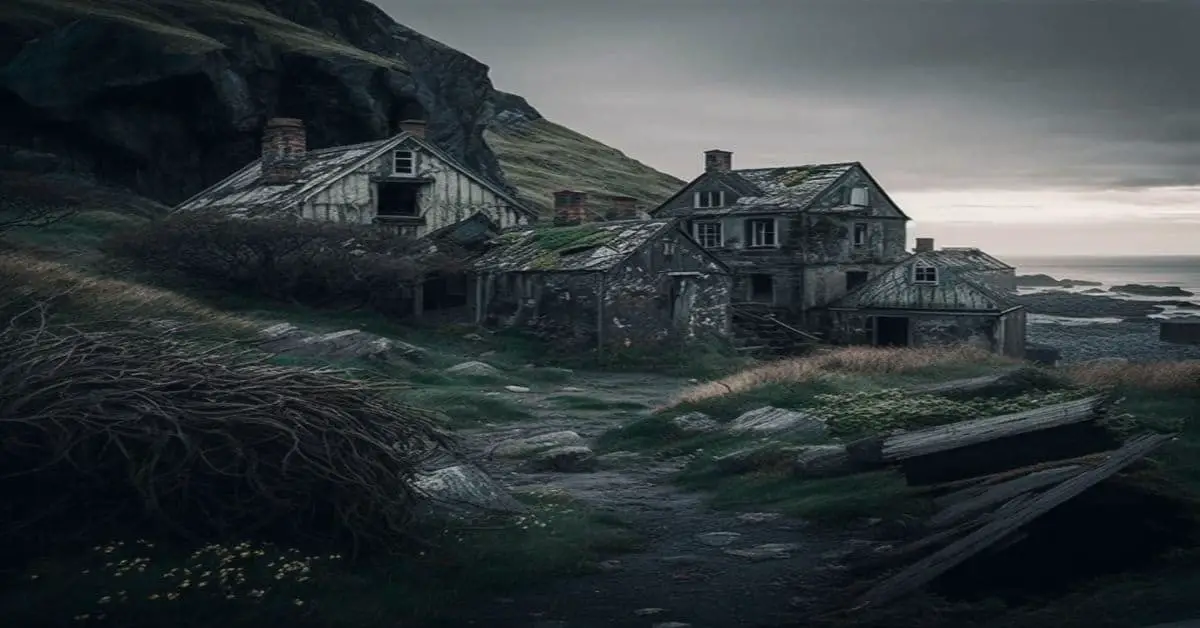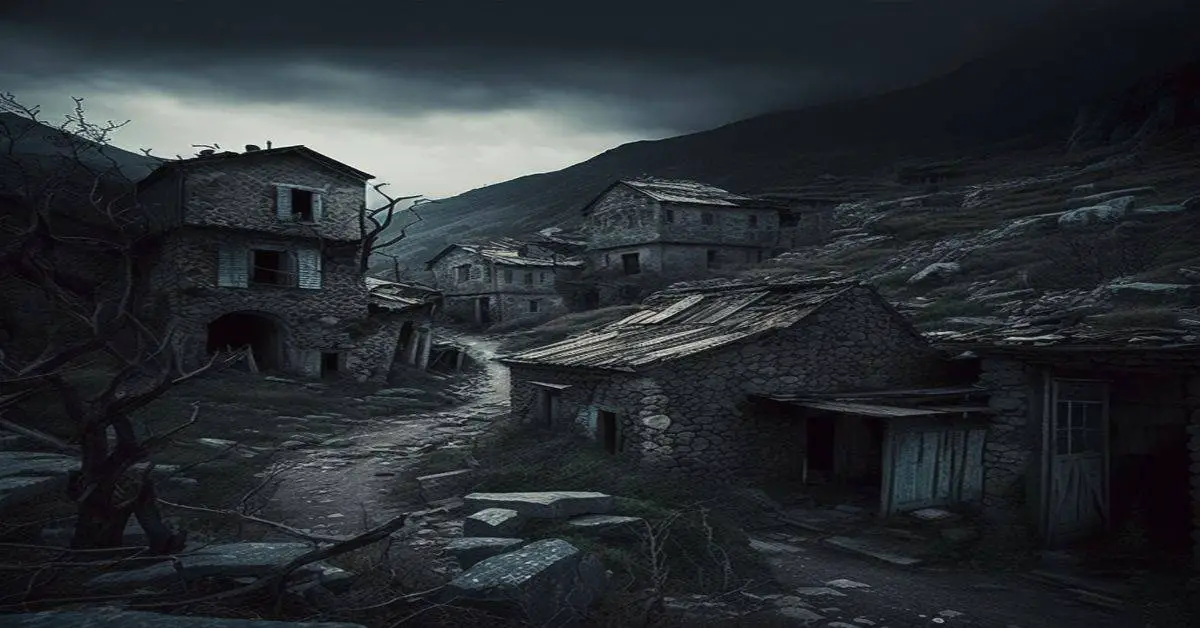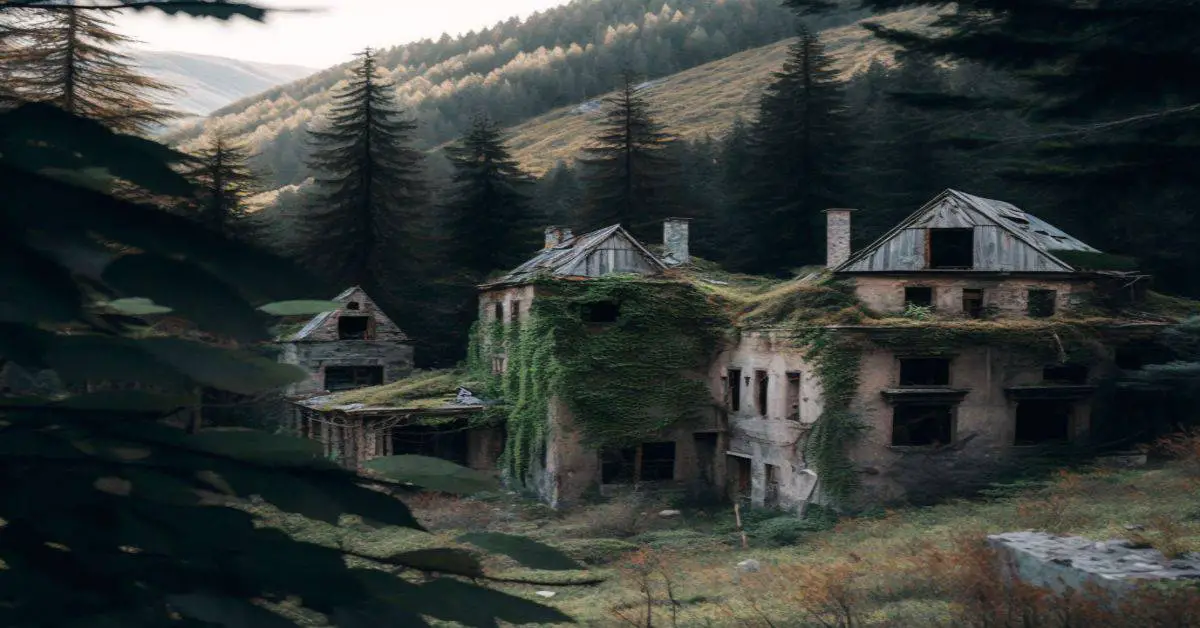As the saying goes, ‘time heals all wounds,’ but in the case of the abandoned ghost town of Stauffer, time has only deepened the wounds of its past. Located in the isolated NE corner of Lake County off Highway 20, Stauffer is a haunting reminder of the harsh realities of life in the arid and unforgiving terrain of eastern Oregon.
With no current residents, the remains of buildings, fences, an abandoned mine, and a reservoir offer a glimpse into the town’s past, leaving visitors with a sense of awe and contemplation.
Despite the lack of information about Stauffer’s beginnings and end, it is speculated that the town served as a homestead for dry farmers or sheep ranchers in the mid-1800s. However, the departure of its residents is likely due to the difficulty of dry farming in the chunky bedrock below Glass Butte, which is an infamous resting place for tons of obsidian.
The town’s abandonment has left behind an eerie and thought-provoking chilling atmosphere, providing a unique opportunity to explore the history and lore of eastern Oregon. In this article, we will delve into the history and remains of Stauffer, as well as provide some tips for those who wish to visit.
Key Takeaways
- Stauffer is an abandoned ghost town located in NE corner of Lake County in Oregon that served as a homestead for dry farmers or sheep ranchers in the mid-1800s.
- The remains of buildings, fences, an abandoned mine, and a reservoir offer a glimpse into the town’s past, and Glass Butte adds to the eerie atmosphere of Stauffer.
- Despite the lack of information about Stauffer’s beginnings and end, its legacy lives on through legends and mysteries that continue to intrigue visitors, and its cultural significance lies in its representation of the challenges faced by dry farmers and sheep ranchers in the mid-1800s.
- Visitors can enjoy hiking, camping, and wildlife viewing in the area, and exploring the remains of Stauffer offers a unique opportunity to step back in time and experience a piece of Oregon’s history.
History and Lore
The history and lore surrounding Stauffer, an abandoned ghost town located in the NE corner of Lake county off Highway 20, is mostly speculative as there is limited information about its beginnings or end. However, the town’s legacy lives on through legends and mysteries that continue to intrigue visitors.
Stauffer’s cultural significance lies in its representation of the challenges faced by dry farmers and sheep ranchers in the mid-1800s, who struggled to survive in an arid climate with hot, dry summers and cold, dry winters.
Despite the lack of concrete information, Stauffer’s remains offer a glimpse into the past and a chance to ponder the history of eastern Oregon. The town’s abandoned buildings, fences, mine, and reservoir stand as a testament to the hard work and perseverance of those who once called it home.
Glass Butte, an infamous resting place for tons of obsidian, adds to the eerie atmosphere of Stauffer, making it a unique and intriguing destination for those interested in exploring Oregon’s ghost towns and the stories they hold.
Remains and Attractions
Amidst the arid landscape of the northeast corner of Lake County off Highway 20, visitors can discover the remnants of a once-thriving community, including buildings, fences, an abandoned mine, and a reservoir. The abandoned buildings and forgotten artifacts offer a glimpse into the past, allowing visitors to imagine what life was like in this remote corner of Oregon. Local legends and haunting stories abound, adding to the eerie atmosphere of the ghost town.
Despite its abandonment, Stauffer still holds hidden treasures for those willing to explore. Natural wonders, such as Glass Butte, offer scenic views and the opportunity to see wildlife in its natural habitat. The reservoir provides a peaceful spot for fishing or a picnic, while the abandoned mine offers a glimpse into the area’s mining history.
Exploring the remains of Stauffer offers a unique opportunity to step back in time and experience a piece of Oregon’s history.
Visiting Tips
When planning a visit to the area around Glass Butte, it may be helpful to bring sturdy shoes and extra water due to the arid climate and rugged terrain.
Stauffer is an abandoned ghost town that is located in the NE corner of Lake County in Oregon. The remains of buildings, fences, an abandoned mine, and a reservoir can be found here. Although no current residents exist, visitors can explore the town and ponder its history. It is believed that Stauffer was once a homestead for dry farmers or sheep ranchers in the mid-1800s, but the departure of residents was likely due to the difficulty of dry farming in the chunky bedrock below Glass Butte.
Aside from exploring the town, nearby activities include visiting Glass Butte, an infamous resting place for tons of obsidian. This natural wonder is a great place to ponder the history of eastern Oregon and marvel at the unique landscape. Visitors can also enjoy hiking, camping, and wildlife viewing in the area.
While spring may be soggy, any time of the year is a good time to visit. With its eerie atmosphere and rich history, Stauffer offers a unique and memorable experience for those who are interested in exploring the ghost towns of the American West.
Frequently Asked Questions
What was the population of Stauffer at its peak?
As the historical significance of Stauffer remains shrouded in lore, no information exists on its peak population. However, the departure of residents suggests a population decline likely due to the difficulty of dry farming on chunky bedrock below Glass Butte.
Are there any legends or ghost stories associated with Stauffer?
Supernatural sightings and local folklore are rumored to exist in Stauffer, an abandoned ghost town in Oregon. Abandoned buildings and hidden treasures add to the eerie atmosphere, but little is known about the town’s history and its supposed ghostly inhabitants.
Has any famous person ever visited or lived in Stauffer?
There is no record of any celebrity sightings or notable events in Stauffer’s history. The town’s origins and demise are shrouded in mystery, with only speculation about its former residents and their departure due to difficulty in dry farming on chunky bedrock.
What was the main industry or source of income for the residents of Stauffer?
The main industry or source of income for the residents of Stauffer is not well documented. However, it is speculated that dry farming or sheep ranching may have been the primary means of livelihood for the community in the mid-1800s.
Are there any plans to restore or preserve Stauffer’s remaining buildings and structures?
Possible restoration or historic preservation efforts for Stauffer’s remaining buildings and structures are unknown. Due to its lack of current residents and sparse historical information, it is unclear if any plans exist for its preservation.


